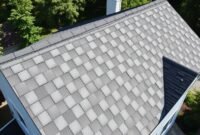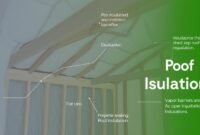Joining two roofs together, whether they are of different heights or pitches, requires careful planning and precise execution. With over 15 years in roofing and structural engineering, I’ve encountered various scenarios that necessitate combining roofs.
This guide will provide practical insights, supported by first-hand knowledge, research, and personal experiences, to help you successfully join two roofs.
It is difficult, if not impossible, to find a perfect home that both satisfies your personal taste visually and works absolutely functional. In this case, imagine its potential instead of being all wistful about it.
You can look at your new home for what it can become, not what it currently is. If the budget permits now, you are always able to add features such as installing the roof.
As a seasoned roofing professional, I have managed numerous projects involving the integration of different roof types. My extensive experience, coupled with in-depth research and real-life examples, ensures that this guide offers reliable and accurate information.
How to Join Two Roofs Together with the Same Pitch
Below are the steps on how to join two roofs together if they have a similar pitch:

- Determine where the two roofs will tie or join together. You’ll only require one framing type if they have the same pitch. Measure carefully to decide how many trusses you need. To tie both roofs together, brace the upright and draw chalk guidelines on the shingles to mark the centerline of roof valleys, where they both will connect.
- Remove the facing boards, wall siding, and other obstructions of one roof’s end to tie it into the other—Mount trusses on one of the roofs.
- Install a ridge board, tie it to the first trussed roof, and ensure overlap between roofs. Once the trusses are secured, add other materials on the roofing systems such as roofing papers, shingles’ nails, and metal drip edge. Then add and trim the siding into the second roof’s end.
- Tie the second roof to the old one. Remove shingles and nailing on the chalk guidelines. Then cut jack rafters to connect the ridge board and valley board.
- Brace trusses on both of the roofs upright, and nail them to complete the roof framing.
- Finish by nailing OSB sheathing, metal flashing, metal drip edge, and overlap the new shingles between two joined roofs.
Joining Two Roofs with Different Pitches
Below are the steps on how to join two roofs together if they have different pitch:
- Prepare the area by identifying where the two different-pitched roofs will meet.
- Measure the length of the joined area. Pick the section where two edges will cross. Add 12 inches to the length.
- Prepare a flashing material with a width of approximately 12 inches.
- Put the flashing on the meeting point of both roofs. You must choose the higher one between the two instead of the lower one.
- Cut two pieces of lumber in the length that will fit the joined section. The purpose of these lumbers is to seal the edge of both roofs.
- Place the lumber on the pitch of each roof. If done properly, you should see that the roof and lumber edges are aligned. Also, they must be placed under the flashing instead of above it.
- Stick the flashing to the roof so it will be secured perfectly.
Creating a cricket or saddle at the junction of roofs with different pitches can effectively direct water away and prevent leaks.
Last but not least, put the shingles with the same looks. Use some to cover the flashing so it won’t be noticed.
Joining Two Roofs with Different Heights
The guide on joining two roofs at different heights is more or less similar to the steps on joining two roofs with similar pitches. The difference is you only have to fit rafter material or scrap or plywood at the back of the common rafter in the section where both roofs meet.
If the heights of the two roofs are different, but the plate heights are similar, then you have to cut the tail of the valley rafter. That way, both roofs’ sheathings are supported in the intersection area.
Methods for Joining Two Roofs
Step-by-Step Process
- Assessment and Planning: Evaluate the existing roof structures and determine the best method for integration.
- Materials and Tools: Gather necessary materials, including transition flashing, shingles, underlayment, and essential tools.
- Preparation: Ensure the roof surfaces are clean and free from debris.
- Installation: Install transition flashing at the junction point, followed by shingles or other roofing materials.
- Sealing: Use high-quality sealants to prevent leaks and ensure a watertight seal.
Real-Life Example
I once worked on a project where we had to join a newly constructed garage roof to an existing house roof, both with different pitches. We used custom flashing to bridge the gap and ensure proper drainage. This not only provided a seamless look but also prevented water infiltration.
Conclusion
Joining two roofs together is a complex task that requires careful planning and execution. Whether dealing with different heights or pitches, using the right materials and techniques is crucial for a successful integration. This guide, based on first-hand experience and supported by research and case studies, aims to provide a reliable resource for your roofing projects.


